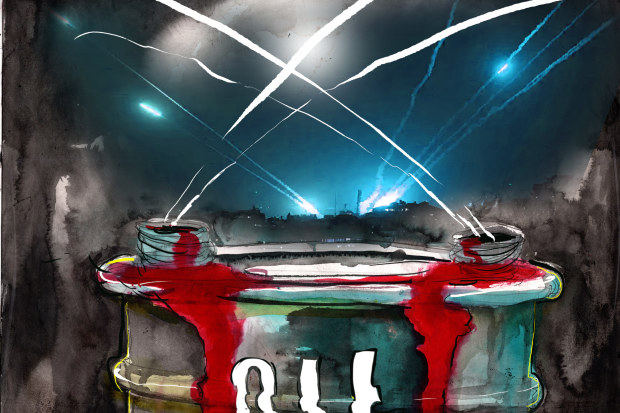Chanticleer

Red Sea oil spike is exactly what markets and central banks don’t need
Falling oil prices have made the fight against inflation much easier for central banks, which in turn has boosted markets. The Red Sea attacks threaten to change that.
There’s something very telling that the US-led maritime task force protecting commercial ships travelling through the Red Sea from missile attacks by Houthi militants is called Operation Prosperity Guardian.
The Red Sea turmoil is exactly the sort of expansion of the Middle East conflict that markets have feared, where a contained battle spills into the global economy. The near 4 per cent surge in the price of oil on Monday night after BP said it would suspend Red Sea sailings is an early sign of the disruption that could be coming.

Oil prices are a key determinate of geopolitical tension, Hagai Segal says. David Rowe
Nine of the 10 largest ocean carriers, and oil giants including BP, suspended operations in the Red Sea off Yemen, where ships must pass to use the Suez Canal that links Europe and Asia.
Freight forwarder Flexport says as much as 25 per cent of global shipping capacity could be affected by the attacks, with most carriers now sending vessels around South Africa’s Cape of Good Hope. It’s a change in route that will add 20 per cent to travel times and cause a ripple effect of scheduling and planning problems.
Flexport chief executive Ryan Petersen gives the example of four containers that his company was waiting to send from Spain to Morocco. Rerouting around the Cape of Good Hope means the ship that had been booked to pick them up will arrive two weeks late. But the ship will stop at Morocco before Spain, meaning Flexport will need to make other arrangements for those containers. The potential for a messy and expensive few months is obvious.
The timing of the Red Sea attacks also isn’t great for central banks.
Oil prices have largely ignored the conflict between Israel and Hamas, falling from above $US95 a barrel in late September to below $US73 just a week ago, delivering sweet relief for central banks battling inflation and adding to the mounting case for rate cuts.
The RBA minutes released on Tuesday noted oil prices “were around 15 per cent lower than their recent peak in late September… as demand had eased in line with slower global growth and amid signs that the Hamas–Israel conflict seemed not to be spreading more widely across the region”.
That fall has helped drag inflation lower, contributing to what the minutes described as “encouraging signs of progress towards the board’s objectives” of inflation back in the range of 2 per cent to 3 per cent.
Governor Michele Bullock obviously won’t be thrilled at the prospect that a broader conflict in the Middle East – the US will be joined by Britain, Bahrain, Canada, France, Italy, the Netherlands, Norway, the Seychelles and Spain in the new taskforce – could light a fire under energy prices again.
While the Gaza conflict had little impact on oil supply, the Red Sea attacks are a tangible sign of energy market disruption from regional unrest. In addition to the jump in oil prices, European natural gas prices surged 13 per cent on Monday night, given the disruption to LNG cargoes.
The combination of increased commodity prices, lower bond yields and higher equity markets is not good news for central banks, says Torsten Slok, chief economist at alternatives giant Apollo Global Management.
“Rising uncertainty in the Suez channel combined with the global economy rebounding because of easier financial conditions could put upward pressure on goods inflation over the coming months.”
Exactly what the maritime task force can, and will, do to stop the attacks remains to be seen. Protecting ships in the area won’t be easy, but bombing Houthi forces in Yemen could get messy too, given Iranian support for the rebels. Whether a negotiated end to the attacks is possible also remains unclear; the Houthi forces appear broadly supportive of the Palestinian cause, but their attacks on European ships suggest they might have a broader agenda.
The column was struck last month by New York University professor Hagai M. Segal’s comments at the UBS Australasia Conference on the importance of the direction of the oil price in deciding how this Red Sea drama might evolve from here.
Segal reminded us that it was an oil price shock that sparked the stagnation of the world economy in the 1970s. But he also pointed out that high oil prices tended to provide rogue states such as Iran and Russia with the liquidity required to support military action.
Could any oil price spike in the wake of the Red Sea attacks embolden Iran to support Hamas and the Houthis against Israel sparking a wider conflict?
We’re a long way from that, and hopefully this drama is quickly resolved. But let’s not forget Segal’s key lesson: where geopolitics once decided the path of oil prices, the reverse is increasingly true.
Introducing your Newsfeed
Follow the topics, people and companies that matter to you.
Find out moreRead More
Latest In Energy
Fetching latest articles